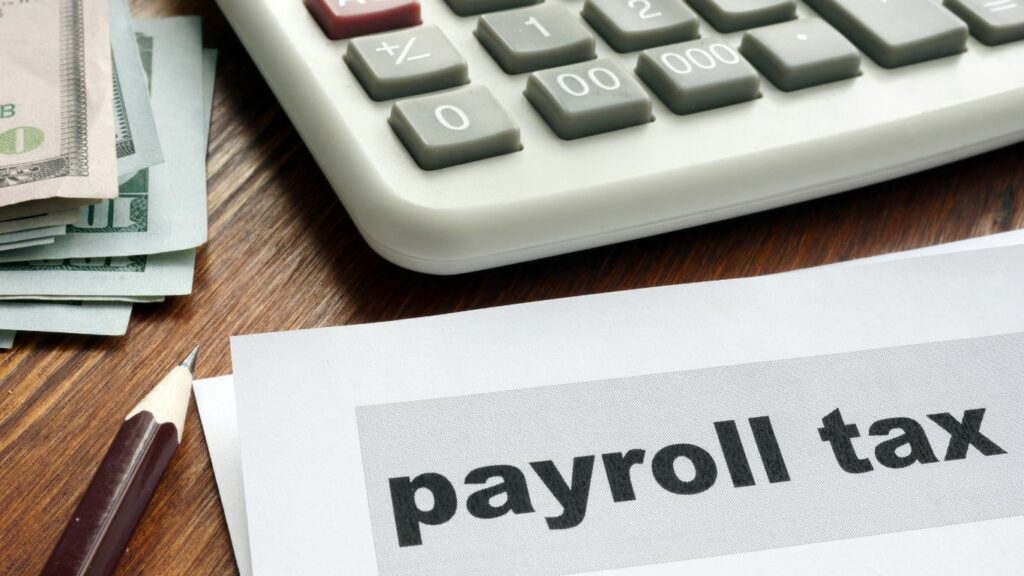Ever wondered why your pay slip includes a payroll tax line item? Or as an employer, struggled with accurately calculating and paying this tax? Payroll tax is a fundamental aspect of doing business in Australia, and understanding it is crucial for both employers and employees.
Key Takeaways
- Payroll tax is a state-based levy on wages paid to employees and contractors, with varying rates and thresholds across states.
- Employers must register, calculate liability, and submit payments/returns on time to avoid penalties.
- Proper record-keeping and understanding regulations are essential for compliance and dispute resolution.
The Basics of Payroll Tax
Payroll tax is a state-based levy on wages paid to employees and contractors. As an employer, you are responsible for calculating, reporting, and paying this tax according to payroll tax legislation. The rules can be complex, as the definition of wages for payroll tax may differ from your usual wage calculations. Understanding these differences is essential for compliance and avoiding penalties. Rates and thresholds also vary across states and territories, adding another layer of complexity.
Definition and Purpose
Payroll tax is a self-assessed tax, meaning employers must determine their liability. It’s not just about employee payments; all payable wages must be considered. Governments use payroll tax revenue to fund services like health and education. Rates and thresholds vary to ensure larger businesses contribute more, distributing the tax burden equitably.
Employer Responsibilities
Employers must check if they need to register for payroll tax based on their wage bill exceeding the monthly threshold in their state or territory. Once registered, calculate your payroll tax liability by determining taxable wages and applying the relevant rate. Monthly payments or nil returns must be submitted within seven days after each month’s end to avoid interest and penalty tax.
Employee Impact
Employees are not directly responsible for payroll tax, but it can still affect them by potentially lowering wages, reducing benefits, and impacting employment opportunities. Understanding payroll tax is important for both employers and employees.
Payroll Tax Rates and Thresholds Across Australia
Payroll tax rates and thresholds vary across states and territories, impacting employers’ tax obligations. It’s crucial to understand the rates and thresholds in your specific location.
Comparing State and Territory Rates
Payroll tax rates vary significantly. For example:
- New South Wales: 5.45%
- Victoria: 4.85%, lower for regional employers
- Australian Capital Territory: 6.85% Rates can change, so check with your state or territory revenue office for current information.
Understanding Thresholds
The payroll tax threshold is the annual wage bill limit that triggers liability. If your taxable wages don’t exceed this threshold, you don’t pay the tax. Thresholds also vary by state, so check local regulations.
Determining Taxable Wages
Taxable wages include any remuneration to an employee for services. This includes salaries, bonuses, and allowances. Payments to contractors might also be considered wages, depending on the relationship.
Inclusions and Exclusions
Include regular wages, allowances, bonuses, and commissions. Some wages, like those subsidized under the Commonwealth JobKeeper scheme, are exempt. Understanding inclusions and exclusions ensures accurate payroll tax calculation.
Contractors and Employment Agents
Payments to contractors could be considered wages for payroll tax purposes, depending on the nature of the relationship. However, there are exceptions, such as for services not typically required by your business.
Exemptions and Concessions
Exemptions and concessions can reduce payroll tax liability. These apply to certain wages and specific organizations, such as non-profits and public hospitals, which must meet specific criteria.
Types of Exempt Wages
Exempt wages include those paid to apprentices, trainees, and for maternity, paternity, or adoption leave. Check with your local revenue office for specific exemptions in your state.
Eligible Organizations
Non-profits, religious institutions, and public hospitals may qualify for payroll tax exemptions or concessions. These organizations must meet specific criteria and provide documentation to prove eligibility.
Calculating and Paying Payroll Tax
Accurately calculating and paying payroll tax involves determining taxable wages, applying the relevant rate, and considering exemptions or concessions. Payments can be made through various methods like direct debit, credit card, BPAY, and online services.
Steps to Calculate Payroll Tax
- Determine total taxable wages.
- Apply the relevant state rate.
- Consider any exemptions or concessions.
- Calculate the payroll tax on the remaining amount.
Payment Options and Deadlines
Monthly payroll tax payments are due by the 7th of the following month, and annual payments are usually due by 21st July each year. Late payments can result in penalties, so timely submission is crucial.
Record Keeping and Compliance
Maintain accurate records and report payroll tax commitments to your state revenue office. Keep detailed payroll records for at least five years, including details of wages, exemptions, and payroll tax payments.
Required Records
Accurate record-keeping helps with compliance and reporting obligations. Regular payroll tax returns must be lodged monthly and an annual reconciliation by 21st July each year.
Navigating Payroll Tax Audits, Disputes, and Penalties
Understanding the audit process and how to manage disputes and penalties can help navigate challenges with payroll tax. Audits review your records and calculations to ensure compliance.
Audit Process
Payroll tax audits review undeclared or incorrect grouping, employee misclassification, inadequate record-keeping, and potential tax avoidance.
Resolving Disputes
Disputes may involve payroll tax liability, exemptions, or penalties. You can negotiate with your state revenue office and lodge objections if you disagree with audit findings.
Avoiding and Managing Penalties
Avoid penalties through accurate record-keeping, meeting reporting deadlines, and seeking professional guidance. If you face penalties, managing them effectively can mitigate their impact on your business.
Summary
Navigating payroll tax in Australia is complex, but with a solid understanding of the basics, you can manage your obligations confidently. Whether you’re an employer or employee, understanding payroll tax is crucial.
If you need help with financial tax planning or have any questions, contact BOA & Co. at 1300 952 286, email [email protected], or visit www.boanco.com.au. Our expert tax advisors are here to assist you with a streamlined and effective tax process.

